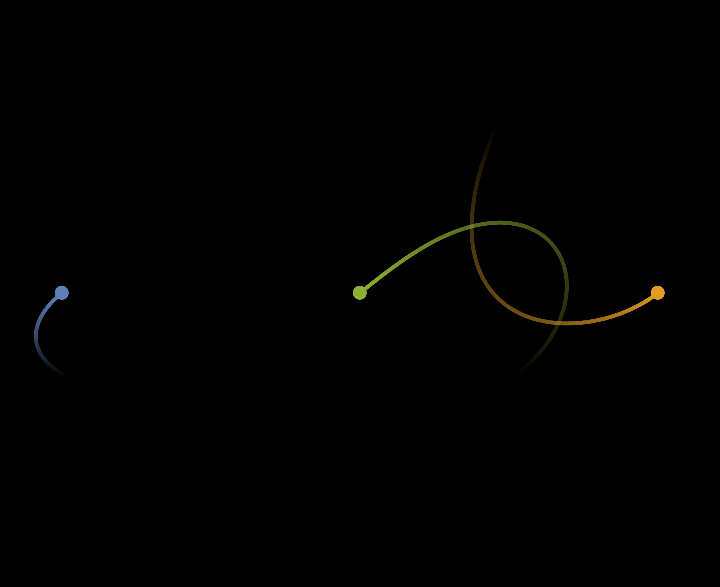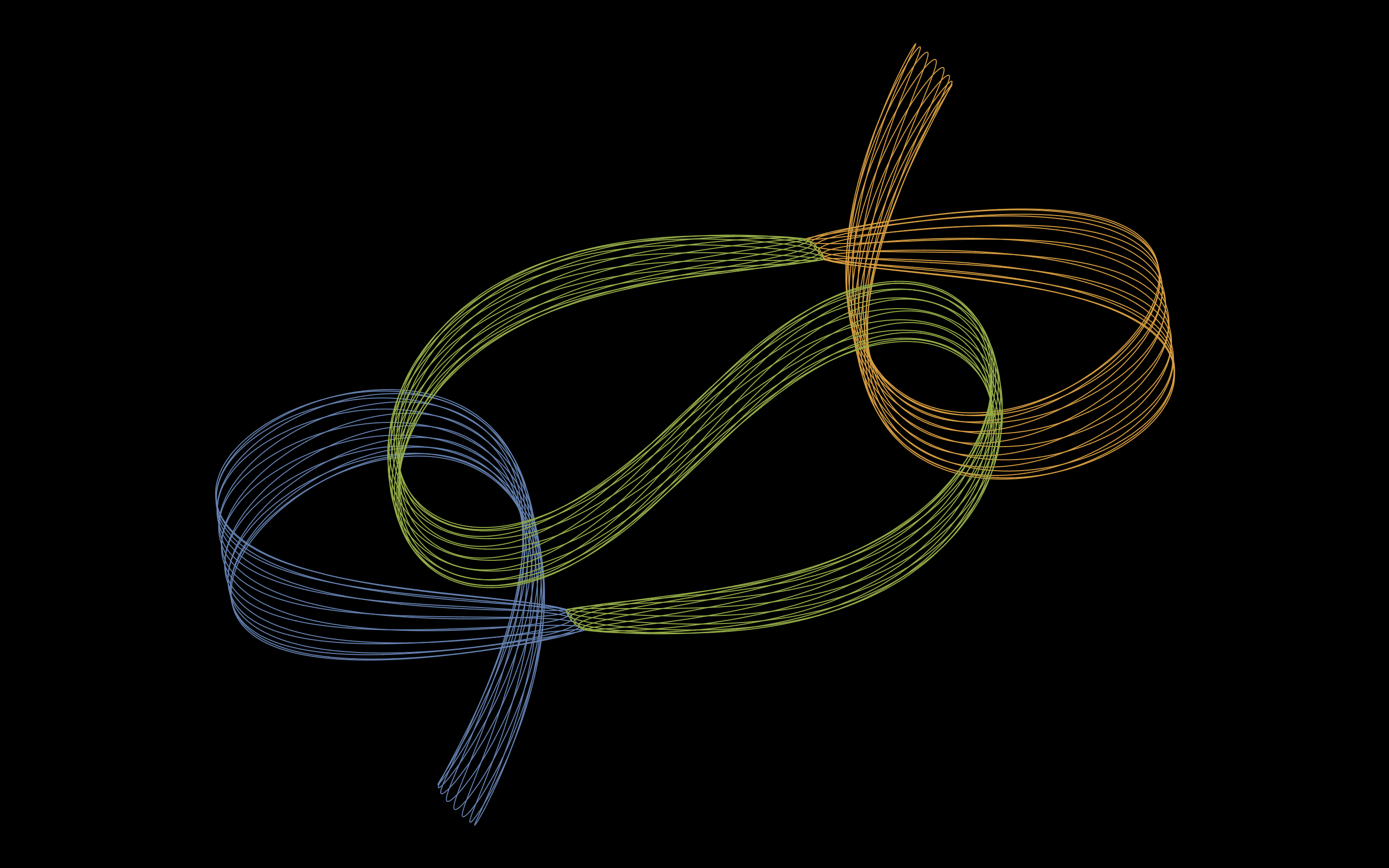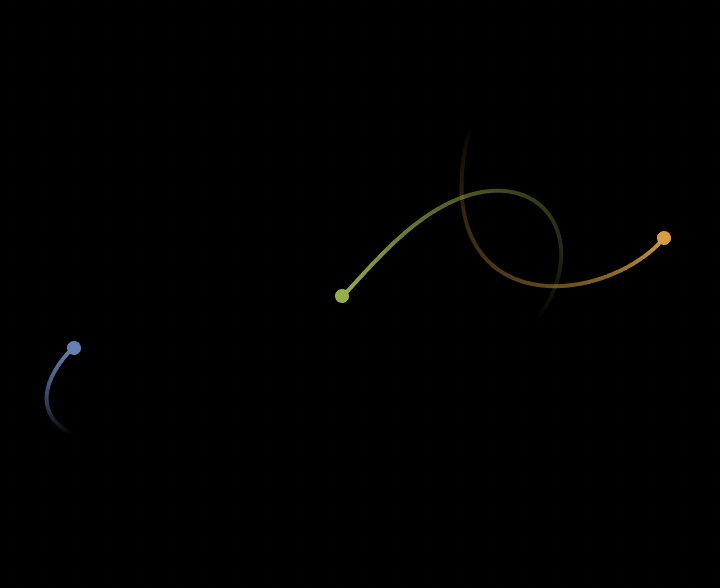
I recently stumbled upon Three Classes of Newtonian Three-Body Planar Periodic Orbits. Here's a quick way to reproduce their findings using NBodySimulation.
periodic3Body2D[vx0_, vy0_, T_, opts : OptionsPattern[NBodySimulation]] :=
Block[{x10, y10, x20, y20, x30, y30, vx10, vy10, vx20, vy20, vx30, vy30},
x10 = -1;
x20 = 1;
x30 = 0;
y10 = y20 = y30 = 0;
vx10 = vx20 = vx0;
vx30 = -2 vx0;
vy10 = vy20 = vy0;
vy30 = -2 vy0;
NBodySimulation["InverseSquare", {
<|"Mass" -> 1, "Position" -> {x10, y10},
"Velocity" -> {vx10, vy10}|>,
<|"Mass" -> 1, "Position" -> {x20, y20},
"Velocity" -> {vx20, vy20}|>,
<|"Mass" -> 1, "Position" -> {x30, y30},
"Velocity" -> {vx30, vy30}|>
}, T, opts]
]
Here's a plot of the full paths of one orbit group listed in the paper:
{vx0, vy0, T} = {0.41682, 0.33033, 55.7898};
yinyangII = periodic3Body2D[vx0, vy0, T, MaxStepSize -> .001];
plot = ParametricPlot[Evaluate[yinyangII[All, "Position", t]], {t, 0, 55.7898},
PlotPoints -> 100, PlotStyle -> AbsoluteThickness[1],
Background -> Black, Axes -> False, ImageSize -> 1024,
MaxRecursion -> 13] /. Line -> BSplineCurve

Let's write a helper function to plot the three bodies with a trailing orbit at a given time.
First let's find the position of each body at an arbitrary time t. Here we add the capability of sampling over any time point injecting Mod:
bodyPos = yinyangII[All, "Position", t] /. t -> Mod[t, T];
Next, for each body we'll sample from t-1 to t to form a trail. We'll make each vertex in the trail more transparent the closer to t-1 it is. We also represent each body as a point. The use of Transpose ensures the points lie on top of all trails, which comes in handy during a close encounters.
makeFrame[Ts_] :=
Graphics[
Transpose@Table[
With[{c = ColorData[97, i], vals = Table[Evaluate@bodyPos[[i]], {t, Ts - 1, Ts, .001}]},
{
{Thick, Line[vals, VertexColors -> Thread[Append[c, Range[0., 1, .001]]]]},
{PointSize[Large], c, Point[vals[[-1]]]}
}
],
{i, 3}
],
Axes -> False,
Background -> Black,
PlotRange -> {{-1.09, 1.09}, {-0.89, 0.89}},
PlotRangePadding -> Scaled[.05]
]
Here's the configuration at time t == 21: 
This could make for a nice screensaver. Let's make a 60 second 10 fps gif:
framecnt = 600;
frames = Monitor[
Table[
Rasterize[makeFrame[Ts]],
{Ts, Subdivide[0, T, framecnt - 1]}
],
Row[{ProgressIndicator[Ts, {0, T}], " ", Ts/T}]
]; // AbsoluteTiming
(* {220.461, Null} *)
Export["orbital_yinyangII.gif", Most[frames], AnimationRepetitions -> ∞, "DisplayDurations" -> 0.1];